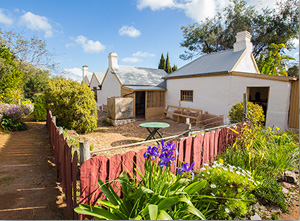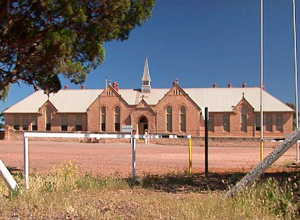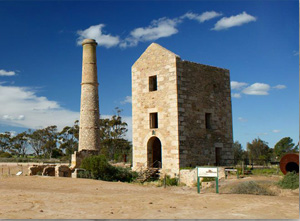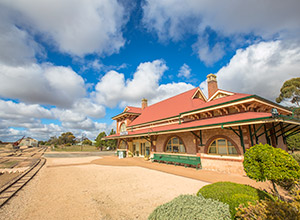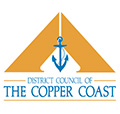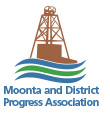Miner’s Way
Moonta Mines to Broken Hill
Take a trip back through a significant era of Australia’s mining history in the Mount Lofty and Flinders Ranges of South Australia. Recapture the romance and adventure of Australia’s first mining era in this picturesque landscape, which still bears the evidence of mining activity.
Two main highways link Adelaide with the most distant sites at Broken Hill and in the Flinders Ranges. The drive between these locations takes five to six hours but allow a full day or more to visit sites en route. Allow a full day at Broken Hill and several days in the Flinders Ranges. The main highways are sealed but roads in the Flinders Ranges and access roads to some mining sites are gravelled. A number of sites are within easy reach of Adelaide and can be visited on half or full-day excursions, although the Moonta–Wallaroo and Burra areas are more suited to overnight stops.
Many of the towns offer a choice of accommodation from camping grounds to hotels, motels, and unique heritage buildings, although beds are limited in the Flinders Ranges.
History
The first metal mine in Australia, Wheal Gawler at Glen Osmond, commenced operations within sight of Adelaide in 1841. This was followed by the mining of copper ores at Kapunda (1844) and Burra (1845), which caused the first major decentralisation from Adelaide. The 1840s are now recognised as Australia’s first mining era, an era prior to the discovery of gold in Victoria and New South Wales in the 1850s.
Cornish miners and their families poured into South Australia to take part in the great copper boom. They brought with them their mining expertise to help extract the rich ore that gave South Australia the title of the by virtue of mines of world significance. By 1850, South Australia was the third largest copper producer in the world and its mines had added financial stability to an almost bankrupt colony.
These mineral deposits had a profound effect on settlement in the new colony. Land was surveyed for mineral tenements, mining townships and agricultural purposes. Basic road networks were established during this period to cart ore to Port Adelaide for shipment to Wales, and to deliver heavy machinery to the mines.
South Australia’s importance as a copper producer was maintained with further discoveries at Wallaroo in 1859 and Moonta in 1861. These mines were on large, rich deposits and were worked continuously for more than 60 years. During the 1860s and 1870s, many smaller mines producing copper, gold, lead and silver were established throughout the Mount Lofty and Flinders Ranges.
The Cousin Jacks, as the Cornish miners were known, left Cornwall by the thousands and created distinctive Cornish communities at numerous mining locations, in particular Burra, Moonta and Kadina (Wallaroo Mines). The Cornish played a central role in the development of South Australia’s early mining industry. Even after the end of Cornish immigration in the 1880s, this influence continued and Cornish customs and traditions flourished.
The Broken Hill orebody, discovered in 1883 just east of the South Australia–New South Wales border, was the world’s largest silver–lead–zinc deposit of such high grade. It had a significant influence on the Australian economy as the initial profits were used in the transformation of Australia from a country dependent on wheat and wool to a nation strong in secondary industries.
The Mining Legacy
Much remains to capture the atmosphere of this early mining era. The dry South Australian climate has helped to preserve stone buildings and chimneys, deep mine shafts and tunnels, tailings heaps and slag dumps.
The South Australian Mining Heritage Trails bring together more than 20 widely scattered and diverse sites which are managed by various organisations. These provide a representative range of what remains of the historic mining sites and field relics. Self-guided walking trails, featuring interpretive panels, have been established at most of these sites.
In the towns, which were born of the historic mining era, you will find signposted heritage trails, museums and interpretive centres, colourful historic hotels and restored stone buildings containing restaurants, craft shops and specialty accommodation. These allow you the chance to experience part of South Australia’s unique mining heritage.
Itinerary
- Moonta–Wallaroo–Kadina (Australia’s Little Cornwall region)
- Kapunda–Burra (Australia’s earliest mining era)
- Broken Hill via Kapunda and Burra
- Moonta-Kapunda–Burra–Broken Hill-Darling River to Wentworth return Adelaide
Broken Hill is a good starting point for these trails if you are passing through from the Eastern States.
Source: Primary Industries and Resources SA



